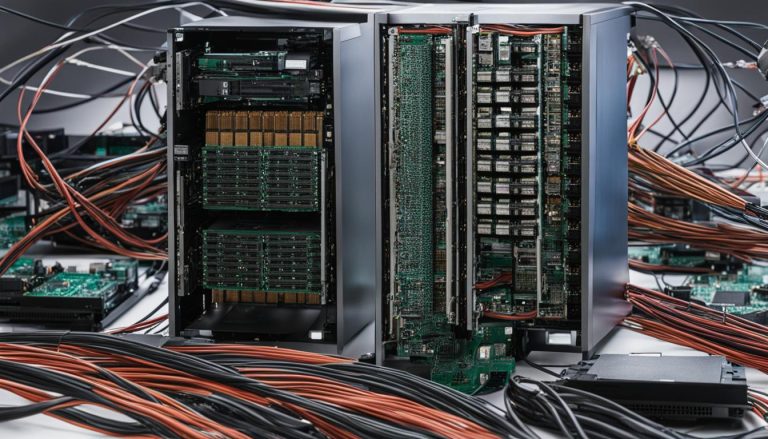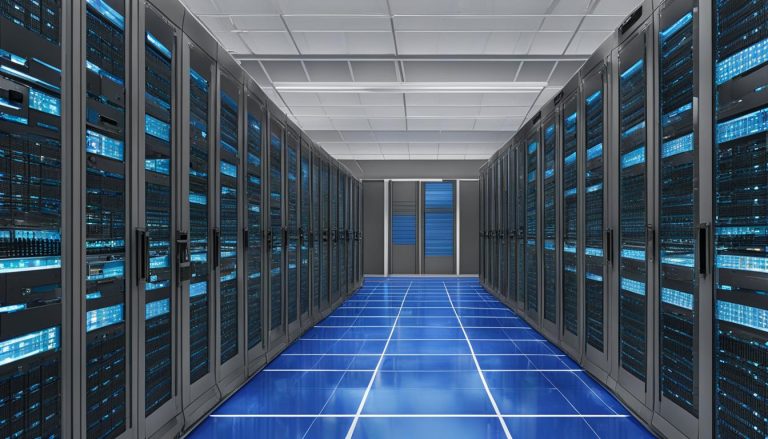Windows 2000 Server is a robust and dependable platform that provides critical business infrastructure. It offers a wide range of features and specifications that make it a highly versatile and reliable operating system. With its robust architecture and extensive support, Windows 2000 Server is a popular choice for businesses of all sizes. Its benefits include improved performance, enhanced security, and compatibility with a wide range of applications. To install Windows 2000 Server, you need to meet specific hardware and software requirements, ensuring a smooth and efficient installation process. Overall, Windows 2000 Server is an excellent choice for businesses looking to optimize their IT infrastructure.
Key Takeaways
- Windows 2000 Server is a robust operating system for critical business infrastructure.
- It offers improved performance, enhanced security, and compatibility with various applications.
- Meeting specific hardware and software requirements is crucial for a successful installation.
- Windows 2000 Server comes in different versions to cater to different business needs.
- Regular updates are essential for optimal functionality and security.
Windows 2000 Server Versions and Support
When it comes to Windows 2000 Server, businesses have multiple versions to choose from based on their specific needs. The three main versions available are Windows 2000 Server, Windows 2000 Advanced Server, and Windows 2000 Datacenter Server. Each version offers different levels of scalability and performance.
Windows 2000 Server is the standard edition that provides essential server capabilities for small to medium-sized businesses. It offers robust networking features, support for Active Directory, and the ability to run critical applications.
Windows 2000 Advanced Server, on the other hand, is designed for larger organizations that require enhanced scalability and performance. It supports up to 8 processors, up to 8 GB of RAM, and additional features like Network Load Balancing and Cluster Service.
For enterprises with the most demanding computing needs, Windows 2000 Datacenter Server is the ideal choice. It offers support for up to 32 processors, up to 64 GB of RAM, and advanced features like hot-add memory and hot-add processor. This version ensures high availability and reliability for mission-critical applications.
| Version | Scalability | Performance | Features |
|---|---|---|---|
| Windows 2000 Server | Medium | Standard | Active Directory, robust networking |
| Windows 2000 Advanced Server | High | Enhanced | Network Load Balancing, Cluster Service |
| Windows 2000 Datacenter Server | Very high | Optimized | Hot-add memory, hot-add processor |
Microsoft provides ongoing support for Windows 2000 Server, ensuring that businesses can receive assistance when needed. This support includes regular updates and patches to address any security vulnerabilities and improve system performance. It’s important for businesses to stay up-to-date with the latest support offerings to keep their Windows 2000 Server installations secure and optimized.
Windows 2000 Server Architecture and Updates
Windows 2000 Server boasts a robust architecture designed to handle the demands of modern business environments. At the heart of this architecture is Active Directory, a powerful feature that provides centralized management of users, computers, and other network resources. With Active Directory, businesses can streamline user administration, simplify access control, and enhance security across their network infrastructure.
In addition to Active Directory, Windows 2000 Server offers support for key networking protocols and services. This allows for seamless integration into existing infrastructures, making it easier for businesses to deploy and manage their network resources. Whether it’s setting up file sharing, configuring DHCP or DNS services, or managing print servers, Windows 2000 Server provides the necessary tools and features to ensure efficient network administration.
Microsoft understands the importance of keeping Windows 2000 Server secure and up to date. That’s why they regularly release updates to address any security vulnerabilities and improve system performance. By staying current with these updates, businesses can ensure that their Windows 2000 Server remains secure and optimized for performance. It’s crucial to implement a regular update schedule and monitor for any new releases to maintain the integrity and reliability of the server.
Table: Key Features of Windows 2000 Server Architecture
| Feature | Description |
|---|---|
| Active Directory | A centralized management system for users, computers, and network resources, streamlining administration and enhancing security. |
| Networking Protocols and Services | Support for key networking protocols and services allows for seamless integration into existing infrastructures, simplifying network administration. |
| Regular Updates | Microsoft releases updates to address security vulnerabilities and improve system performance, ensuring the server remains secure and optimized. |
With its robust architecture and regular updates, Windows 2000 Server provides businesses with a reliable and secure platform for their critical infrastructure. Whether it’s managing users and resources with Active Directory or seamlessly integrating into existing networks, this operating system offers the necessary features and tools to optimize IT operations.
Windows 2000 Server Installation and Configuration
Installing Windows 2000 Server is a crucial step in leveraging its capabilities for your business. To ensure a smooth installation process, follow the step-by-step guide below:
- Partition and format the hard drive: Before installing the operating system, you need to partition and format the hard drive. This step prepares the disk for the installation process.
- Select the installation type: Windows 2000 Server provides different installation types, such as fresh installation or upgrading from a previous version. Choose the appropriate installation type based on your requirements.
- Enter the product key: During the installation process, you will be prompted to enter the product key. This key is essential for activating and validating your Windows 2000 Server license.
- Configure network settings: Set up the network settings, including IP address, subnet mask, and default gateway. These settings enable your server to communicate with other devices on the network.
Once the installation is complete, additional configuration is necessary to tailor Windows 2000 Server to your business needs. This includes setting up user accounts, permissions, and network services. Take the time to carefully configure these settings to ensure a secure and efficient server environment.
Table: Windows 2000 Server Installation Steps
| Step | Description |
|---|---|
| 1 | Partition and format the hard drive |
| 2 | Select the installation type |
| 3 | Enter the product key |
| 4 | Configure network settings |
| 5 | Set up user accounts, permissions, and network services |
By following these installation and configuration steps, you can successfully deploy Windows 2000 Server and harness its full potential for your business. Remember to keep your server up to date with the latest patches and updates from Microsoft to ensure optimal functionality and security.
Conclusion
In summary, Windows 2000 Server is an exceptional operating system that brings numerous benefits to businesses. Its robust architecture and extensive support make it a reliable choice for critical business infrastructure. With improved performance, enhanced security, and compatibility with various applications, Windows 2000 Server provides a solid foundation for optimizing your IT infrastructure.
By leveraging the features and capabilities of Windows 2000 Server, businesses can streamline their operations, increase productivity, and ensure a secure and efficient environment for their employees and customers. The different versions of Windows 2000 Server cater to varying needs, allowing businesses to choose the one that aligns with their requirements.
Furthermore, Microsoft’s continuous updates and support for Windows 2000 Server ensure that businesses can benefit from the latest advancements and security patches. Keeping the server up to date is crucial for maintaining optimal functionality and safeguarding against potential threats.
In conclusion, Windows 2000 Server is a valuable asset for businesses of all sizes. Its benefits span across performance, security, and compatibility, making it an excellent choice for optimizing your IT infrastructure and driving success in today’s rapidly evolving business landscape.
FAQ
What is Windows 2000 Server?
Windows 2000 Server is a robust and dependable operating system that provides critical business infrastructure.
What features and specifications does Windows 2000 Server offer?
Windows 2000 Server offers a wide range of features and specifications, including improved performance, enhanced security, and compatibility with various applications.
What are the hardware and software requirements for installing Windows 2000 Server?
To install Windows 2000 Server, you need to meet specific hardware and software requirements, ensuring a smooth and efficient installation process.
What are the benefits of using Windows 2000 Server for businesses?
Benefits of using Windows 2000 Server include improved performance, enhanced security, and compatibility with a wide range of applications, among others.
What are the different versions of Windows 2000 Server?
Windows 2000 Server was released in multiple versions, including Windows 2000 Server, Windows 2000 Advanced Server, and Windows 2000 Datacenter Server.
How does Windows 2000 Server handle the demands of modern business environments?
Windows 2000 Server has a robust architecture that includes features like Active Directory and support for key networking protocols, making it easy to integrate into existing infrastructures.
How do I install Windows 2000 Server?
Installing Windows 2000 Server involves following a step-by-step process, including partitioning the hard drive, selecting the installation type, and configuring network settings, among others.
How do I configure Windows 2000 Server after installation?
After installation, further configuration is required to set up user accounts, permissions, and network services for Windows 2000 Server.
Janina is a senior specialist in information technology


